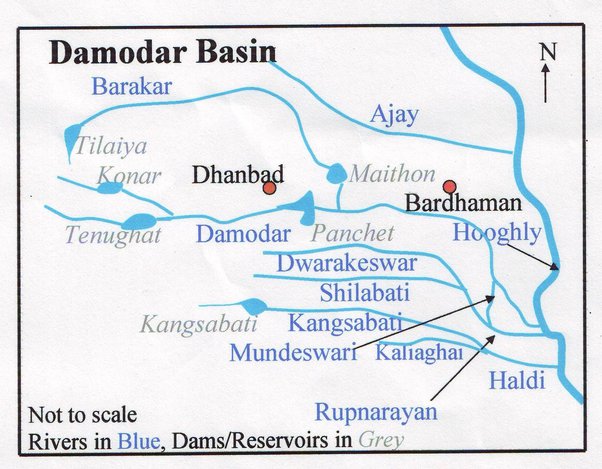The drainage system in West Bengal is characterized by a network of rivers, tributaries, and the unique Sundarbans Delta. The state, located in the eastern part of India, is crisscrossed by numerous rivers originating from the Himalayas and draining into the Bay of Bengal.

Ganga River: The Ganga, one of the holiest rivers in India, flows through the western part of West Bengal. It enters the state near the town of Farakka and traverses through districts like Murshidabad, Nadia, and Hooghly.
Hooghly River: The Hooghly River is a distributary of the Ganga, formed by the confluence of the Bhagirathi and Jalangi rivers. It flows southward, passing through major cities like Kolkata and Howrah, and finally joins the Bay of Bengal.

Teesta River: The Teesta is a major river in North Bengal, originating from the Himalayas. It flows through the Darjeeling and Jalpaiguri districts before entering the state of Sikkim. The Teesta contributes significantly to the state’s water resources.
Subarnarekha River: The Subarnarekha flows through the western part of West Bengal, forming a natural boundary with the state of Jharkhand. It eventually joins the Bay of Bengal.
Damodar River: Known as the “Sorrow of Bengal” due to its history of flooding, the Damodar River flows through the western and central parts of the state. It is a significant river for the region’s water management and has been dammed to control flooding.
Mayurakshi River: The Mayurakshi is a major tributary of the Damodar River, originating from the Chota Nagpur Plateau. It flows through the western districts of West Bengal, contributing to the overall drainage pattern.
Rupnarayan River: The Rupnarayan is a distributary of the Ganga, branching off near Geonkhali in Howrah district. It flows through the districts of Howrah, Hooghly, and Purba Medinipur before joining the Bay of Bengal.
Sundarbans Delta: The Sundarbans, a vast delta formed by the confluence of several rivers, including the Ganga, Brahmaputra, and Meghna, is a unique part of the state’s drainage system. It is known for its mangrove forests and diverse wildlife.
Tidal Rivers: West Bengal has several tidal rivers and estuaries influenced by the Bay of Bengal. These water bodies play a crucial role in the ecological balance of the region.
The intricate network of rivers in West Bengal, combined with the Sundarbans Delta, contributes to the state’s rich biodiversity and agricultural productivity. However, the region is also prone to flooding, and efforts are made to manage water resources effectively for sustainable development.